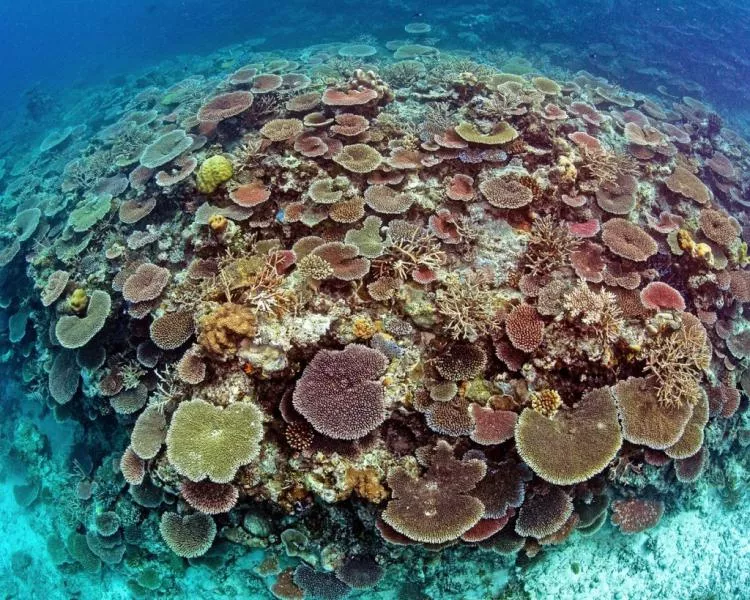Corals store dormant 'seed banks' like forests do
CSIRO scientists made a groundbreaking discovery about coral reefs during a seven-year study in Palau. Despite a super typhoon in 2012 causing significant damage to eastern reefs, the team observed an unexpected and rapid recovery.
Initially slow, the recovery puzzled scientists in the study, led by marine ecologist Dr Christopher Doropoulos and research co-lead Dr George Roff, together with team members from the University of Queensland and Palau International Coral Reef Center, who expected regeneration to follow traditional patterns, driven by coral spawning events. These events involve the synchronized release of eggs and sperm into the water, leading to the dispersal of coral larvae that settle onto impacted reefs. However, the Palau reefs showed no new coral recruitment for the first four years after the typhoon.
Dormant coral
Upon closer inspection, the team discovered a novel mechanism for recovery: dormant coral “seed banks.” Hidden within the coral framework, these dormant recruits remained inactive until the disturbance removed adult corals, triggering their germination. Doropoulos compared this to the dormancy observed in plant seed banks.
“We’ve known about dormancy in seed banks in plants for a long time. This is when plants release a mass of seeds that can sit in the soil for decades, waiting for the right conditions to germinate. It happens in seagrass too. But this is the first time we’ve seen or conceptualized it in coral,” said Doropoulos.
Environmental cues
The study highlighted the importance of environmental cues, such as variations in light, water flow, and reduced competition from algae and adult corals, in activating the coral seed banks. Doropoulos emphasized the significance of understanding these mechanisms, stating, “This is a now-known mechanism by which reefs recover from disturbances.”
Further research in Northwest Western Australia challenged preconceived notions about coral recovery. A two-year study examined degraded reefs in the UNESCO Ningaloo Marine Park and neighboring Exmouth Gulf following a mass bleaching event and cyclones. Doropoulos stressed the need to comprehend the dynamics of reef systems before restoration efforts, questioning the natural potential for recovery and identifying limiting factors.
Thriving in marginal conditions
Contrary to expectations, the study revealed that coral cultured in clear-water conditions could thrive in marginal, turbid reefs. Factors affecting recovery included competition with algae and sediment smothering new coral recruits. The comprehensive research integrated laboratory experiments, larval culturing, reef deployment, field monitoring, remote sensing, and larval dispersal modeling.
Coral larvae were cultured on tiles placed in different reef environments, and their growth was monitored over 18 months. Excitingly, the team observed coral growth from 3mm to 150mm in marginal conditions, challenging previous assumptions. Doropoulos highlighted the implications for conservation and management strategies, especially in establishing new marine parks, stating, “These findings will help inform conservation and management strategies for agencies during the establishment of a new marine park in the Exmouth Gulf.”




























